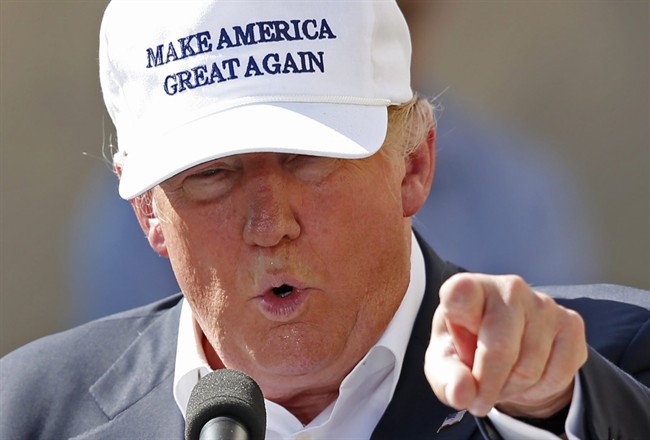Buy American rhetoric is back. And if Donald Trump tries to include those policies in his massive $1 trillion infrastructure bill as a Democratic politician has suggested, Canada will needs to position itself as a friend, not foe of the U.S. economy.

“The only constructive way that Canada can deal with protectionist measures that could arise in the United States is to basically sell the value of the Canada-U.S. relationship to U.S. policy makers,” said Craig Alexander, senior vice-president and chief economist at The Conference Board of Canada.
READ MORE: Canada, Mexico will also have NAFTA demands if Donald Trump reopens trade deal
“Almost two-third of the value of our economy is trade, so it’s of critical importance that Canada maintains an open border with the United States.”
A Buy American policy requires the U.S. government to choose American products for purchases and projects. It would particularily hurt a number of Canadian industries, including auto, lumber and energy, with the ripple effects reaching much further.
WATCH: Trump shares update on transition, policy plan for first 100 days in office

Canada will need allies. This can be achieveled by talking one-on-one via diplomatic channels, or by engaging U.S. associations and groups that would be adversely affected to lobby on Canada’s behalf.
“Buy America sentiment tends to be very popular,” said international trade lawyer Mark Warner. “The brakes on those protectionist demands are more often than not the president.”
READ MORE: What President Donald Trump will mean for Canada
President-elect Trump is unlikely to be that sober second thought.
Trump ran a successful U.S. presidential campaign promising to tear up trade agreements and bring jobs back to the American people. Among his protectionist promises, in June he indicated that he would only use American steel for infrastructure projects.
WATCH: Business leaders keeping a close eye on Trump’s economic promises

Canada needs to make a strong case that such policies would be a disadvantage to Americans.
Diplomacy is best, but Canada could also attempt to take the U.S. to court.
READ MORE: US lumber industry petitions government to impose duties on Canadian softwood
“There are two approaches,” Alexander explained. “You can create a trade dispute and you can take it to a body like the World Trade Organization, to argue that the ‘Buy American’ program is inconsistent, or you could argue that it’s in violation of NAFTA.”
That would be the aggressive approach, Alexander noted, and likely the wrong one.
“If you get into a trade dispute with the United States, and the U.S. [economy] is ten times the size of Canada, Canada has more to lose than America does.”
Canada has been here before
Trump didn’t start the Buy American movement. In 2009 President Barack Obama brought in the policy as part of recovery efforts amid the recession. The policy imposed requirements for public projects using stimulus funds to use only American-made materials.
This caused outrage and stifled relations, prompting a deal between Canada and the U.S.
WATCH: Here are the campaign promises Donald Trump has backed away from so far

As part of the agreement, Canadian iron, steel and manufactured goods were allowed for use in seven U.S. construction programs – but only for a one-year period, and only in 37 states.
READ MORE: Chinese media issues warning to Donald Trump over flip-flopping on free trade
This time around, Canada also must be prepared to come to the table with some bargaining chips.
“The question is going to come up very quickly, ‘Well what are you guys going to do about your policies?'” said Warner.
Prime Minister Justin Trudeau has already extended an olive branch of sorts to Trump, announcing he is prepared to negotiate the terms of the North American Free Trade Agreement (NAFTA).
Trump, however, has called NAFTA “the worst trade deal maybe ever signed, anywhere” and pledged during his campaign to renegotiate or scrap it altogether.
Trump is set to be sworn in as president on Jan. 20.

With a file from the Canadian Press


Comments